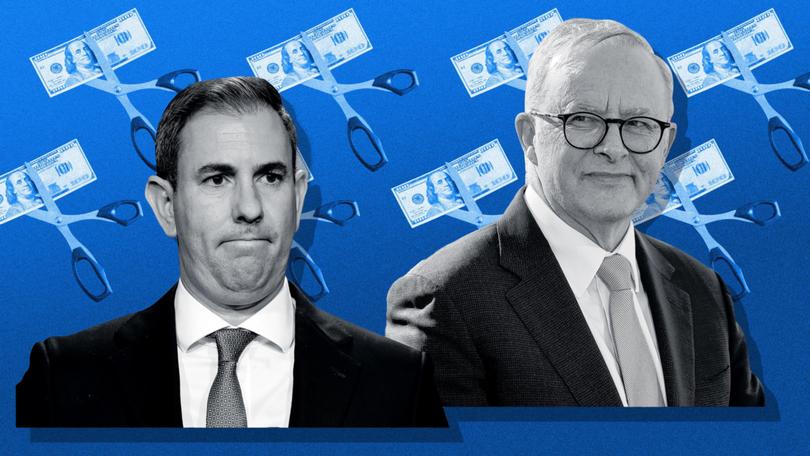PM, Treasurer quell Australia rate cut hopes after US Federal Reserve decision

Any hopes Australia will follow in the United States’ footsteps and slash interest rates have been effectively dashed, with new figures showcasing the remarkably resilient jobs market, despite sluggish economic growth.
The Federal Government began the day by expectation-managing after the US Federal Reserve slashed interest rates for the first time in four years overnight.
Amid growing concerns of an economic slowdown in the US, the bank opted for a larger-than-expected 50 basis point reduction to its key lending rate, down to between 4.75 and 5 per cent.
Sign up to The Nightly's newsletters.
Get the first look at the digital newspaper, curated daily stories and breaking headlines delivered to your inbox.
By continuing you agree to our Terms and Privacy Policy.Economists say the decision suggests a shift in strategy away from fighting inflation to preventing a rise in unemployment and a bid to squash fears of a recession.
While cost-of-living continues to bite Australians, Treasurer Jim Chalmers on Thursday sought to temper hopes the Reserve Bank might also cut rates, declaring Australia faced a very different economic outlook.
“The global economy is a pretty uncertain place, that’s one of the reasons why we’re seeing these rate cuts in places like the US,” he said.
“When it comes to the Australian situation, we’ve got inflation coming off pretty substantially. The Reserve Bank will weigh that up.”
The RBA will meet next week, where the board consider the US announcement, the global economic conditions, as well as the latest jobs rates, which showed the unemployment rate had held steady in August at 4.2 per cent.
The cash rate has remained at the 12-year-high of 4.35 per cent since the end of last year, and after the last meeting governor Michele Bullock declared a rate cut on this side of Christmas was highly unlikely.
While inflation has come down significantly from its peak, getting it back into the RBA’s target of three to four per cent is proving difficult.
The RBA has pointed in part to high government spending as one reason for persistent sticky inflation.
Anthony Albanese said inflation, and interest rates, had “peaked higher in the US” than in Australia. There, inflation peaked at 9.1 per cent in July 2022, significantly higher than 0.1 per cent in May 2020.
“We saw interest rates be far higher in other countries (like the US) than they were here in Australia,” Mr Albanese said.
“What we are managing to do is to try to land a decrease in inflation, which we have cut in half whilst continuing to create employment.”
The latest jobs figure have essentially dashed any glimmer of hope the RBA would cut rates next week, with labour demand remaining relatively resilient despite the sluggish economy.
Ms Bullock has cited the enduring strength of the jobs market as one reason why the board is not expecting to cut rates this year.
CreditorWatch chief economist Anneke Thompson said the Federal Reserve’s decision to slash rates had in part been informed by a weak US labour force.
“The Australian labour force appears to be in better shape than the US, where revisions to historic data over the past few months have been significant and in the negative. This may be one of the reasons why the US Federal Reserve made the decision overnight for a surprise 0.5 percentage point cut to its cash rate,” she said.
“However, it will be duly noted by both the RBA and the Federal Government that Australia’s economic outcomes have been lagging the US by roughly six months over this policy cycle.
“Therefore, they will be keeping a close eye on any forward guidance that the labour force is about to weaken more than is expected. Thus far though, it can be argued that the RBA is successfully ‘threading the needle’ to a soft landing out of this inflationary period.”
Both Mr Albanese and Mr Chalmers emphatically declared the decision of the RBA was a matter for the board on Thursday, after the Treasurer earlier this month criticised the central bank for “smashing” the economy with high interest rates.

